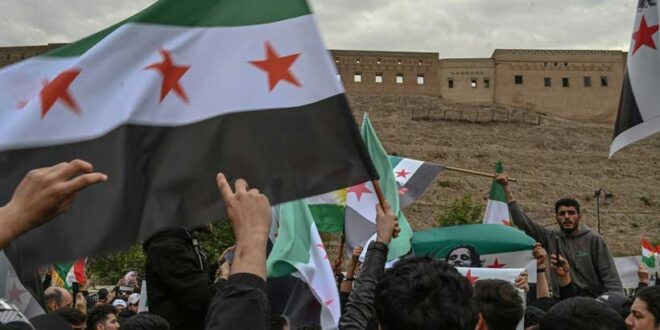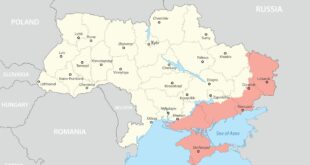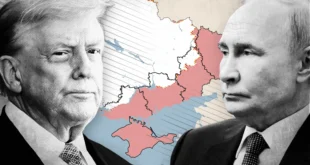On 8 December 2024, a shocking headline broke across news outlets around the world: rebel groups took control of Syria, ending the devastating reign of the Assad regime in power since 2011.
Previous Syrian president Bashar al-Assad consolidated his power after a popular rebellion escalated into a civil war. Over the following years, the violence spread and increased across the entire nation. Hundreds of thousands of people were killed, leaving the Syrian economy, infrastructure, and society in ruins. Vision of Humanity states that the Assad regime “set back the national standard of living by decades” with its destruction of healthcare systems and educational institutions. Assad remained in power for nearly 14 years until rebel forces overthrew the government.
Assad’s crimes against humanity had been carefully documented since the beginning, including sexual violence, torture, displacement, bombing of civilian areas, chemical attacks, and starvation. Most notable were the regime’s capture and detention of civilians, where thousands disappeared into the government’s system of formal and informal incarceration centers. This “agony inflicted on victims and their families was by design,” as the government intentionally withheld information about their prisoners. These crimes were carefully recorded by authorities internally, with a United Nations official stating that “mountains of government documentation reveal the chilling efficiency of systematizing the regime’s atrocity crimes.”
After so many years of heartbreak, ending the conflict was an incredible relief. The next task at hand is to ensure accountability for the perpetrators and justice for the victims of the Assad regime in order to prevent such horrors from happening again. After conflict plagued Syria for over a decade, peace must be sought and maintained while the nation is in its current critical condition. Now, after the fall of the Assad regime, the question that arises is how to advance justice and accountability in Syria, and what measures should be taken to promote long-term peace in the region.
The Simon-Skjodt Center for the Prevention of Genocide argues that the transition from the Assad regime should focus on four key areas: the reunification of detainees and families, the fate of the missing and disappeared, the documentation of atrocity crimes, and the establishment of meaningful and inclusive justice processes. With an end to government-sponsored horrors, the Center believes Syria should seek to care for those who suffered under the regime, for “tending to the released detainees’ physical and psychological needs and locating and reuniting them with their loved ones is an immediate priority.”
After over a decade of mass atrocities, the extent of human suffering is staggering. When the conflict came to an end, 500,000 Syrians had been killed and over six million had been displaced internally, with more than 5.5 million having fled the country. By December 2024, over 100,000 Syrians had disappeared, with the government often intentionally leaving loved ones in the dark.
Preserving documents
While the new Syrian government is working to aid its citizens and restore society, special attention must be paid to safeguarding documents. While this may seem tedious with the other crucial tasks at hand, documentation of the Assad regime’s crimes will be vital in prosecuting perpetrators, ensuring justice for Syrians, and preventing future atrocities from taking place.
In addition to official records, civilians and victims have documented the violence under the Assad regime themselves. These are just as valuable—and perhaps should be regarded with even more reverence—because of the risks involved. While in a detention center, activist Mansour Omari and his fellow prisoners devised a plan to alert the world about the Syrian government’s atrocities. After using blood to write down the names and phone numbers of those held by the state inside of a shirt, the group waited for the first prisoner to be released.
Omari left first, allowing the shirt—and its crucial information—to be freed with him. He contacted the families of those detained and shared the details of their imprisonment across the globe, ultimately collaborating with the United States Holocaust Memorial Museum to create its Syria: Please Don’t Forget Us temporary exhibition in Washington, DC.
Even those who worked under Assad authorities recognized the brutality and extent of the crimes committed. Some decided to take a stand to preserve evidence themselves. For instance, a military photographer forced to take pictures of prisoners killed in custody smuggled out his records, saving 55,000 images on flash drives by hiding them in his shoes.
Information about mass atrocities committed in Syria has also been uploaded to social media over the past decade. This has inspired international activism and the timely creation of non-governmental organizations to help gather evidence. Due to these efforts, it has never “been so necessary and possible to research violence in Syria, due to the widespread use of social media and the proliferation of information… the availability of interviewees outside Syria, and the unprecedented organized activism of Syrian NGOs.” In combination with resources of the diaspora, Syrians who fled detention and abuse can now also add their voices to testify as primary sources to the atrocities.
With the opening of former prisons, experts have highlighted the importance of safeguarding documents so “they can provide information to loved ones and support justice operations in the future.” Cooperation should also be sought from international organizations to further protect the evidence. These bodies, such as the United Nations, have the authority and resources to preserve at-risk documentation and can provide crucial help to individuals doing so on the ground.
Yet even with the fall of the Assad regime, the fate of evidence remains uncertain. Since the government’s collapse, reports have circulated of Syrian citizens damaging evidence. Whether through looting, destruction, or simply seeking to hold the information themselves, these practices could have dangerous ramifications. Even if victims are the ones removing documents, records should not be disturbed. Instead, organizations should ensure that they are given to the proper authorities. Doing so will allow the evidence to be processed and used in the most productive way to hold the Assad regime accountable.
To aid in this process, Amnesty International emphasizes how public awareness campaigns can be used to demonstrate the importance of properly preserving documents. This recommendation is a break from the organization’s usual campaigns, which often take a more direct approach. However, a call to action is still crucial, for the effort highlights that the international community intends on prosecuting perpetrators. Additionally, civilians’ important role in this campaign may empower victims and witnesses to play a role in bringing the criminals to justice.
Justice and accountability
After such horrors, the ultimate goal in Syria is to restore peace and ensure it will remain. One of the first steps to accomplishing long-term stability is the halting of reprisal killings. As tempting as it may be when individuals have experienced such heartbreak and anger, a continuation of violence will not bring communities peace.
Sadly, since December 2024, violence has escalated once again between Assad loyalists and the Syrian transitional government. In a span of four days in early March, over 1,000 Syrians were killed. Although the violence has calmed down, uncertainty persists in Syria while a national fact-finding investigation is underway to learn more about what happened.
In light of such developments, the “transitional government must make the findings of the investigative committee public, ensure that all perpetrators are held accountable—regardless of political or military affiliation—and offer reparations to victims.” This is an important step in pursuing equality early on in the formation of a new government, as the Global Centre for the Responsibility to Protect highlights how crucial it is to include different political, ethnic, and religious groups in reconciliation efforts.
While not perfect, the new Syrian administration under President Ahmed al-Sharaa has respected minorities so far in its formation. In late April 2025, a new cabinet publicly replaced the caretaker government in charge of the transition, including groups outside of Sharaa’s traditional political supporters.
Despite the inherent difficulties in advancing justice and accountability in a region so plagued by conflict, the fall of the Assad regime should be celebrated and used as a starting point for promoting long-term peace. Actions must be taken now to care for victims, preserve documentation, and work towards national and international prosecution of criminals. The hope is that these practices—along with others aimed at helping individuals and communities heal—may begin laying the foundation for peace and prosperity in Syria.
 Geostrategic Media Political Commentary, Analysis, Security, Defense
Geostrategic Media Political Commentary, Analysis, Security, Defense





